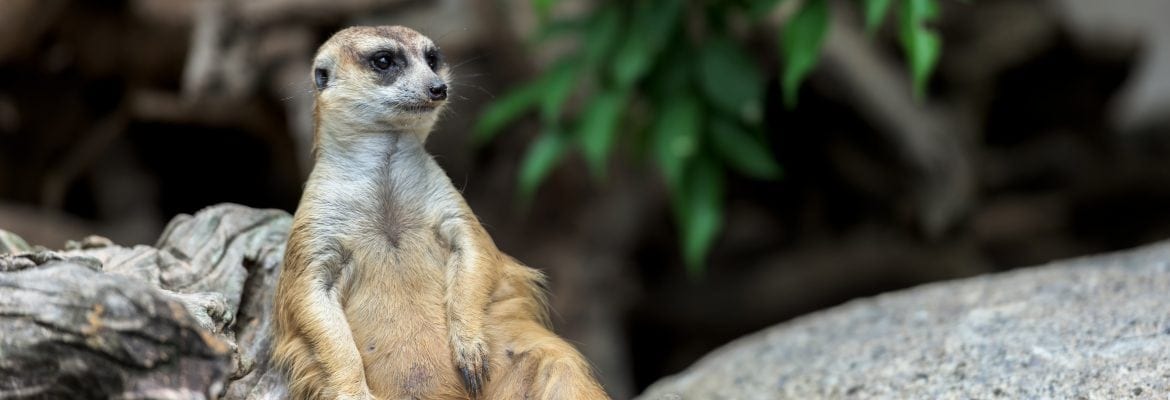
Meerkat
Conservation status: IUCN – LC (Least concern).
Geographic range: Kalahari Desert, Botswana, Namib Desert, southwest Angola.
Physical description: The meerkat is the only member of the Suricata genus and a part of the herpestidae family. Their bodies and legs are slender and they have a tapered face. Their coat colour varies by region, with meerkats from the more southern regions exhibiting darker shades than the other regions. In general, their coats are grey or brown, with distinctive dark patches around their eyes. Their elongated forefeet have long nails which help them dig for food and they weigh between 0,5 and 2,5 kg.
Biology: Meerkats are highly social and live in packs called mobs or clans with approximately 30 individuals belonging to an extended family. Each individual family group includes a breeding pair and their offspring. Within packs, animals are usually friendly, but between packs, serious fights can erupt. Meerkats exhibit sentinel behaviour where one member of the group poses as a lookout, watching for predators and other danger. The sentinel sounds alarmed by giving a distinct bark. Meerkats are resistant to the poisons of some Kalahari scorpion species and they can also dig through a quantity of sand equivalent to their body weight in just a few seconds. Females typically breed at about 24 months of age and their breeding season is typically extended when conditions are favourable. Gestation lasts about 11 weeks and the average litter size is 3-4 offspring.
Lifespan: In the wild 7 years, in captivity 12-14 years.
Food habits: Meerkats are mainly insectivorous, but will also eat small vertebrates.